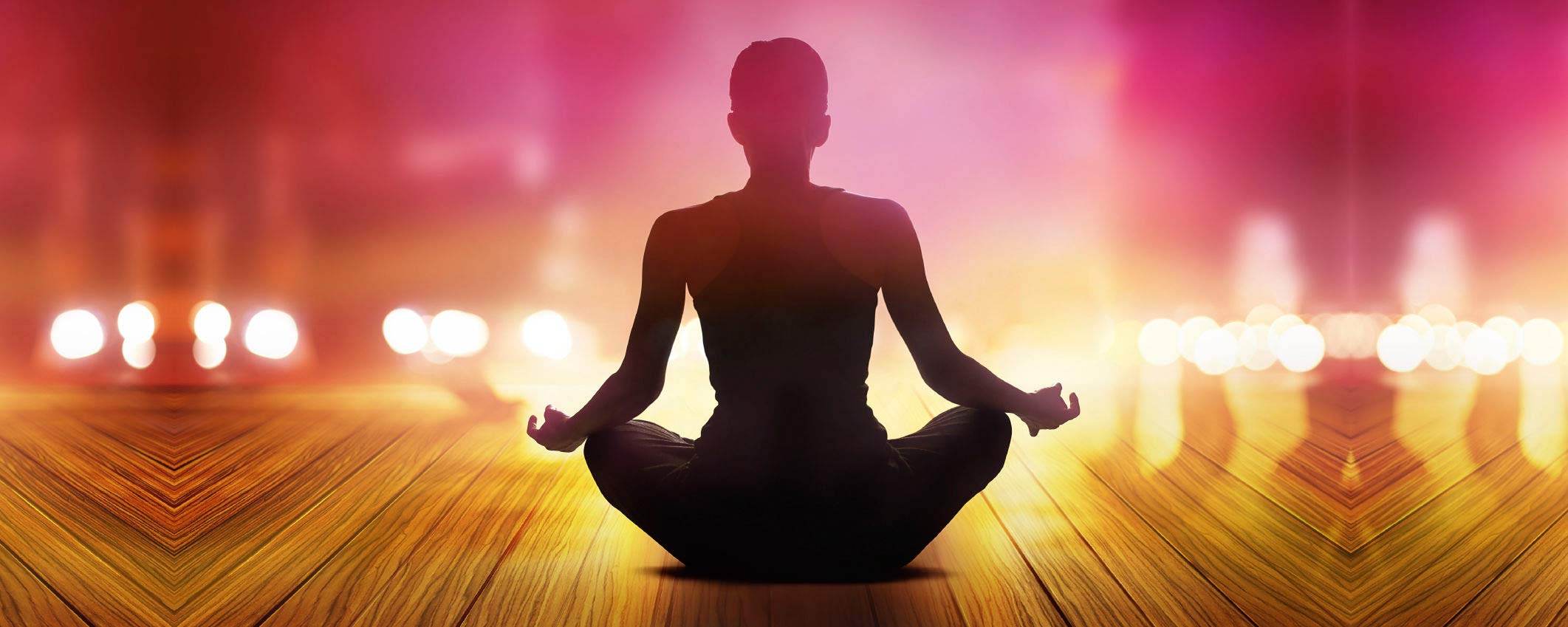Meditation is the act of being quiet and focusing on something other than your thoughts and what’s going on around you for a period of time. Many people experience great improvements in their lives from this practice, including mental and physical benefits. You can learn more in the article, “Meditation: An Overview.”
One of the most commonly-used ways of practicing this ancient art is through seated meditation.
Steps for Seated Meditation
Below are some basic steps you can take when performing a seated meditation:
- Find a quiet place. This should be a comfortable spot in which you won’t be disturbed for the period of time you plan to meditate. You may wish to start with 5 minutes and work your way up to 20 or more. You can be indoors or outdoors, in the sun or in the darkness. Wherever you can be and achieve some quiet solitude will work. Remember to turn off your phone.
- Assume a seated position. Try the classic cross-legged position on a mat on the floor. Most practitioners of this method employ a small pillow or rolled blanket just under the buttocks to tilt the pelvis slightly forward. This makes it easier to maintain a straight spine for the entire meditation. If this doesn’t agree with you, sit in a chair with both feet on the floor. If at all possible, you should be holding your upper body in position rather than allowing it to rest on something like a chair back. The point is to place your spine in as upright a position as naturally and comfortably as possible for the length of the meditation. An upright spine maximizes the entire process of breathing.
- Your eyes can be open, closed, or slightly open. Many find it useful to loosely train the eyes on a point ahead and slightly down from them without moving the neck out of alignment. Some people choose an object on which to focus, such as a candle flame, a crystal, or a religious figure or painting. Do not focus visually, though, just use the item as a place to center yourself and return your mind when your thoughts wander. Remember, this is an inner journey and you don’t need your physical vision. Many people actually find their outer vision disappears from their consciousness as they enter the meditative state.
- Place one arm or forearm on each knee or put place your hands in the form of an oval, facing outward, in your lap in front of you. Relax your shoulder and arm muscles and be sure you are comfortable.
- Notice your breathing and concentrate on a natural rhythm. It is preferable to breathe through the nostrils if you can. Be aware of the air entering and leaving your body. Make this the first point of your meditative focus.
- Become aware of all the nuances of your breathing. Notice the feel of the air in your nose, your throat, and your lungs. Pay attention to the aroma and the air quality. Feel the relaxation and oxygenation of your entire body, and the sensation of movement of the accessory breathing muscles in your chest and back. Feel the relaxation of your shoulder muscles and the lengthening of your neck muscles when you exhale.
General Meditation Tips and Things to Know
Here are a few things to keep in mind as you begin the practice of seated meditation:
- When you initially start your meditation practice, you may wish to consider the focus on breathing awareness as the total extent of your meditative thought. Your mind will become lucid and you will feel immensely refreshed. Later you can decide on subjects of contemplation that are helpful to you.
- As you relax and enter the meditative state, do not be surprised if your pets come and join you. Animals are very sensitive to humans’ moods, and they will oftentimes arrive to comfort you if you are sad or to be in the presence of your “good vibrations” if you are achieving peace. They may distract you for a second as they greet you, but they will inevitably settle down and relax with you. Welcome them as a blessing.
- At this point, the mind frequently becomes very busy. Some have whimsically called this the “monkey-mind” time, as thoughts will start rushing around like so many monkeys in a tree. Don’t let this frustrate you. Simply remember the following:
- With time and regular practice, the “monkey-mind” calms down. There is a natural tendency to follow these intrusive thoughts, but try to return always to the point of your intended meditative thought: your breathing pattern, and how the air feels entering and leaving your body.
- Don’t chide yourself; simply accept the thoughts, acknowledge them, let them go, and return your attention to your breathing or other focal point.
- Don’t try to block thoughts from occurring because that will most likely lead to frustration or a sense that you aren’t “doing it right.”
- The truth is, having thoughts is normal, and meditation doesn’t stop them. Rather, meditating is the practice of choosing to let these thoughts go and focus on something of your choice. Simply state “I don’t need to think about that large pink elephant right now — let’s get back to focusing on inhalation and exhalation and what that feels like.” Treat the “monkey-mind” like a little child, and gently guide it where you want it to go, with love.
Remember to conclude your meditative session with an expression of gratitude. Whether you thank your God, yourself, or the cat that sat next to you, be grateful for the session and the benefit that you realized from it. Slowly become aware of your physical environment once again, and re-enter your day.
